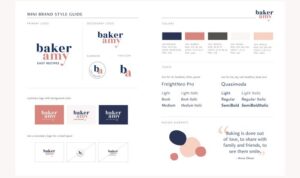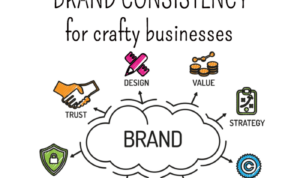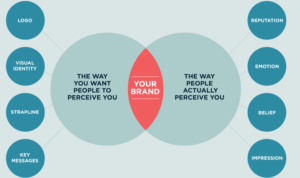Building a Visual Brand Identity sets the stage for businesses to stand out in a crowded market, showcasing the power of design and imagery in creating lasting impressions. Dive into the world of brand identity as we explore key elements and strategies for success.
Importance of Visual Brand Identity
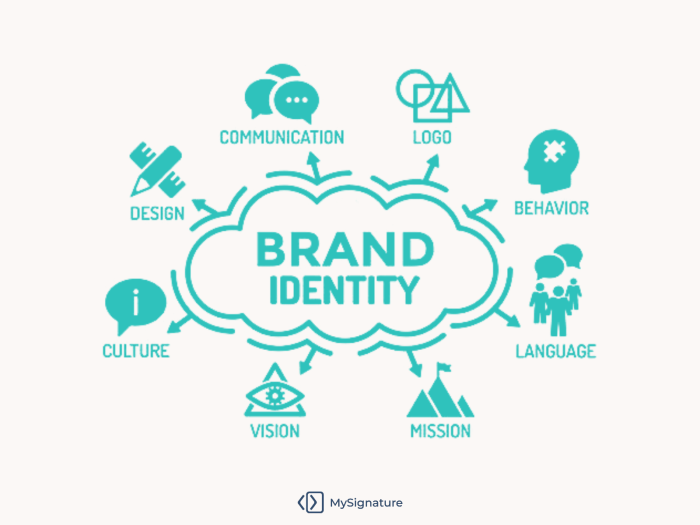
Visual brand identity is like the secret sauce that makes your business stand out in a crowded market. It’s all about creating a consistent look and feel that people can easily recognize and associate with your brand. From logos and color schemes to typography and imagery, every element of your visual brand identity plays a crucial role in shaping how your audience perceives your business.
Examples of Successful Brands with Strong Visual Identities, Building a Visual Brand Identity
- Apple: Think sleek, minimalist design and you immediately picture Apple products. Their iconic bitten apple logo and clean, simple aesthetic have become synonymous with innovation and quality.
- Coca-Cola: The red and white color scheme, along with the classic cursive font of the logo, instantly evoke feelings of nostalgia and happiness. Coca-Cola’s visual brand identity has remained timeless and recognizable for decades.
- Nike: The swoosh logo and “Just Do It” slogan are instantly recognizable worldwide. Nike’s visual brand identity exudes athleticism, empowerment, and a sense of winning.
How Visual Brand Identity Helps in Creating Brand Recognition and Loyalty
Visual brand identity serves as a visual cue that helps consumers easily identify and remember your brand amidst a sea of competitors. When customers consistently see your brand’s visual elements across various touchpoints, such as your website, social media, packaging, and advertisements, it builds trust and familiarity. This, in turn, leads to brand recognition and loyalty, as customers are more likely to choose a brand they are familiar with and trust. In a world where attention spans are short and competition is fierce, a strong visual brand identity can be the key to standing out and staying top-of-mind with your target audience.
Elements of Visual Brand Identity
Visual brand identity is composed of several key elements that work together to create a cohesive and memorable brand image. These elements include the logo, color palette, typography, imagery, and overall design style. Each element plays a crucial role in conveying the brand’s message, values, and personality to the target audience.
Logo
The logo is the most recognizable symbol of a brand and serves as a visual representation of its identity. It should be unique, memorable, and easily identifiable. A well-designed logo can communicate the brand’s values, mission, and essence in a single image.
Color Palette
Colors have a powerful impact on how a brand is perceived. The color palette used in branding helps evoke emotions, create associations, and establish a visual identity. Consistency in color usage across all brand materials is essential to build brand recognition and reinforce brand positioning.
Typography
Typography plays a crucial role in shaping the brand’s voice and tone. The choice of fonts, spacing, and text styles can convey different messages and create a specific brand personality. Consistent typography across all brand communications helps maintain a cohesive visual identity.
Imagery
Images and graphics used in branding contribute to the overall look and feel of the brand. High-quality visuals help communicate the brand’s story, values, and lifestyle. Whether through photography, illustrations, or graphics, imagery should align with the brand’s identity and resonate with the target audience.
Design Style
The overall design style encompasses the visual elements and principles used in brand materials. From layout and composition to visual hierarchy and graphic elements, design style sets the tone for how the brand is perceived. Consistency in design style ensures that all brand elements work together harmoniously to convey a unified brand identity.
Designing a Logo
When it comes to designing a logo that truly reflects a brand’s identity, there are several important aspects to consider. A logo is often the first thing that customers notice about a brand, so it needs to be memorable, versatile, and timeless. Here are some key points to keep in mind:
Importance of a Memorable and Versatile Logo
Having a memorable logo is crucial for brand recognition. A logo that stands out and is easily recognizable can help customers remember your brand and distinguish it from competitors. Additionally, a versatile logo can be used across various platforms and mediums without losing its impact. Whether it’s on a billboard, a business card, or a website, a well-designed logo should look great everywhere.
Tips for Creating a Timeless Logo
- Keep it simple: A cluttered logo can be confusing and hard to remember. Opt for clean and simple designs that convey your brand’s message effectively.
- Choose the right colors: Colors evoke emotions and can play a significant role in how your logo is perceived. Make sure the colors you choose align with your brand values and resonate with your target audience.
- Make it scalable: Your logo should look great whether it’s printed on a small business card or displayed on a large billboard. Test your logo at different sizes to ensure it remains clear and legible.
- Think long-term: While it’s tempting to follow design trends, a timeless logo should withstand the test of time. Avoid using trendy fonts or graphics that may become outdated quickly.
- Seek feedback: Don’t be afraid to get input from others, whether it’s colleagues, friends, or target customers. Feedback can help you refine your logo and ensure it resonates with your audience.
Choosing Colors and Typography
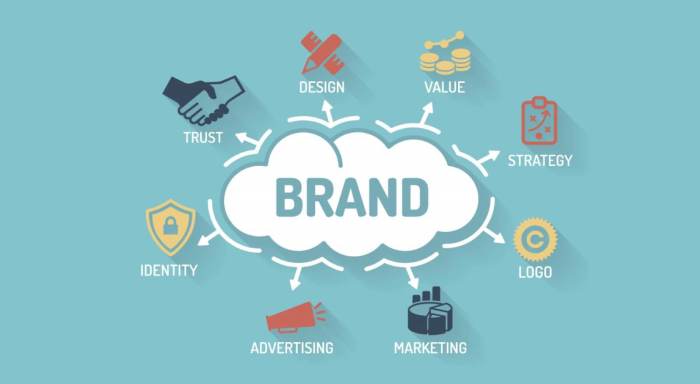
When it comes to building a strong visual brand identity, selecting the right colors and typography is crucial. These elements play a significant role in shaping how your brand is perceived by your audience. Let’s dive into why choosing the right colors and typography is so important and how they can influence brand perception.
The Significance of Colors
Colors have the power to evoke specific emotions and associations in people’s minds. By carefully selecting colors that resonate with your brand’s values and message, you can create a strong visual impact that helps your audience connect with your brand on a deeper level. For example, the bold red of Coca-Cola or the calming blue of Facebook are instantly recognizable and reflect the essence of these brands.
The Influence of Typography
Typography is more than just selecting a font – it’s about choosing a style that complements your brand personality and message. Whether it’s a sleek and modern sans-serif font for a tech company or a playful script font for a children’s brand, typography can convey a lot about your brand’s identity. The right typography can enhance readability, convey professionalism, and strengthen brand recognition.
Examples of Effective Use
– Apple: Known for its minimalist aesthetic, Apple’s use of clean, simple typography and a monochromatic color palette reinforces its brand as sleek and innovative.
– Nike: With its signature bold swoosh logo and vibrant red color, Nike’s branding exudes energy and athleticism, appealing to its target audience of active individuals.
– Starbucks: The iconic green and white color scheme paired with a rustic, hand-drawn logo font creates a sense of warmth and community, aligning with Starbucks’ brand as a cozy coffeehouse experience.
Creating Visual Assets: Building A Visual Brand Identity
Creating visual assets such as images, illustrations, and graphics plays a crucial role in strengthening a brand’s identity. These assets help to convey the brand’s message, values, and personality visually, making it more memorable and recognizable to the target audience.
Tips for Creating Cohesive Visual Assets
- Ensure consistency in style, color palette, and design elements across all visual assets to maintain a cohesive brand image.
- Use high-quality images and graphics that resonate with the brand’s identity and appeal to the target audience.
- Closely align visual assets with the brand’s overall messaging and values to create a seamless brand experience for customers.
- Consider working with a professional designer or creative team to ensure that visual assets are created with precision and creativity.
Utilizing Visual Assets in Marketing Channels
Visual assets can be effectively used across different marketing channels to enhance brand recognition and engagement. From social media posts and website banners to email newsletters and print materials, visual assets can grab the audience’s attention and communicate the brand’s message effectively.
- Optimize images and graphics for each specific marketing channel to ensure they are displayed correctly and maintain quality.
- Create a library of visual assets that can be easily accessed and used across various marketing platforms to maintain consistency.
- Experiment with different types of visual content, such as videos, infographics, and animations, to keep the audience engaged and interested in the brand.
- Monitor the performance of visual assets in different marketing channels and adapt strategies based on the audience’s response to ensure maximum impact.







